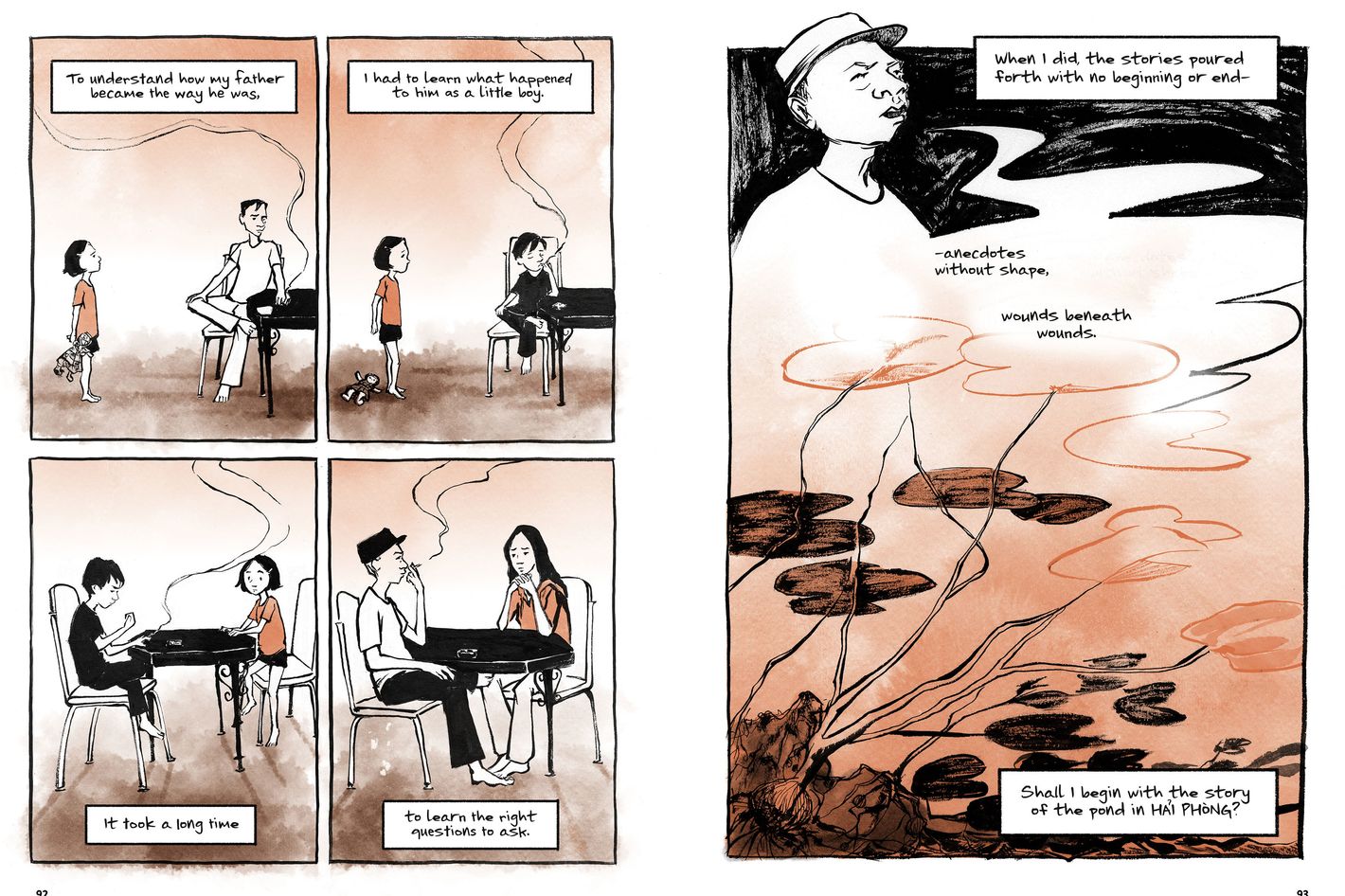For this blog post, I have chosen to analyze and perform a close reading on the brief two page panel found on pages 92-93 of this graphic narrative (as seen below).

https://www.vulture.com/2017/03/thi-bui-best-we-could-do-refugee-comic.html
While reading, this part of the book struck a chord deep within, as I believe that it holds an immense prevalence across every society in the world. Depicted through the raw and unashamedly honest panels of her graphic narrative, the main character Thi Bui attempts to connect with her father Bố on a meaningful level, in hopes of understanding who he truly is and what factors played a role in his development as a man. Their relationship has been a cloudy, confused dynamic, filled with frustration as a result of Bui’s inconsistent spurts of unleashed anger. His negative presence in her life is a puzzle she previously couldn’t solve, as she reflects on the intrinsic fear once felt when in his company. This section of the book deals with the universal disconnect that can occur in families when parents carry the burden of traumatizing past experiences. It touches on the theme of cultural memory and how certain members of a family unload their past troubles onto others, without actually including them within the full scope of the memory.
An immediate connection to Thi’s relationship with Bố can be made when examining the damaged Indigenous communities of Canada. The horrors of the residential schooling system continues to affect present Indigenous generations through indirect processes such as neglect and alcohol/drug abuse, which subsequently forms broken, incongruous homes. Similarly to the Indigenous community’s reconciliation process within Canada, by reading this narrative, we witness how Vietnamese immigrant families also deal with generational conflicts caused by a history of violence and difficulty. On page 93 of the text, this phenomena is described as “wounds beneath wounds”, an interesting visualization of the complicated and delicate layers that contribute to one’s past trauma.
Positively, as a reader we are exposed to some of the tactics that allow children like Thi, to become included in the significant cultural memories that have shaped the aura of her father’s personality. On page 92, Thi concludes “it took a long time to learn the right questions to ask”, proving that one can begin to rebuild a disconnected relationship by listening, instead of demanding answers. In the right context, these cultural memories are ready to be shared by Bố; a form of healing that reconnects and educates Thi about his past experiences, while providing answers to some of her questions regarding his harsh persona. Once Thi started asking the right questions, “the stories poured forth” (93), showing that even aloof characters like Bố, have a perspective to share with others.
In Phil Klay’s “Redeployment”, we are educated about the importance of purposeful conversation between contrasting groups/individuals. By asking questions that provide space for real, unsweetened stories to be told, true growth can occur. On a lesser scale, Thi’s attempt to relate her experiences to her father’s, is similar to the civilian-soldier relationship imitated by Phil Klay, as both relationships struggle to bridge the unrelatable gap of trauma. In “The Best We Could” by Thi Bui, the importance of perspective is depicted through Thi’s growing ability to compare and understand multiple narratives, without personally experiencing them. Notably, this tool connects her with cultural memories and strengthens her bond with other members of her family.
